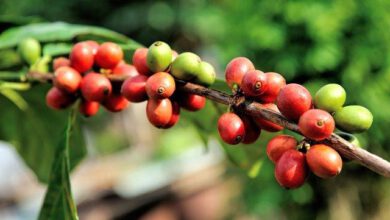Magnesium Deficiency in Greenhouse Tomatoes
Magnesium is a swift moving ion in the plant, proceeding from mature leaves to younger leaves
Eran Ben Yaakov, Agronomist, Gat Fertilizers eran@deshengat.co.il

magnesium is an important plant nutrient, and is one of the macro elements required for plant nutrition. it is localized to the center of the chlorophyll molecule, and it functions as a cofactor in different enzymatic reactions essential for different aspects in homeostasis like sugar synthesis and solutes movement
magnesium is a swift moving ion in the plant, proceeding from mature leaves to younger leaves, so that for the most part deficiency is seen in mature leaves. the symptoms in mature leaves are generally not reversible. magnesium is absorbed from a soil solution as a positive ion, mg2+, and therefore in general in israel’s clay soils, the factor limiting availability of magnesium to the plant is the rate of release of magnesium that is adsorbed to the soil solution rather than the overall amount of magnesium in the soil. in sandy loam soils with a low percentage of clay, the amount of magnesium will be correspondingly low.
before desalinated water was supplied for agriculture, magnesium (as well as calcium, but that won’t be discussed in this article), deficiencies were rare in greenhouses. in desalinated water the magnesium level is very low, and there is real concern for magnesium deficiency in various greenhouse crops, especially in plants sensitive to lack of this element, such as tomatoes.
the tomato plant is an intensive crop, its consumption of nutrients is considered very high, primarily in stages during which the plant is laden with fruit prior to the initial harvest. this plant’s magnesium consumption is equal to its phosphorus consumption, and therefore the grower must provide a concentration of 30-40 ppm magnesium in the irrigation water.
for the grower irrigating with desalinated water, several possibilities are available to correct this deficiency. when irrigating directly with desalinated water (02-03 ec ds/m) we recommend using deshen or fertilizer. in addition to nitrogen, phosphorus, potassium and calcium, this fertilizer also contains magnesium at a level of 0.9%.
when irrigating with water combined of regular water with desalinated water at varying ratios (ec variable 04-08 ds/m), we recommend using yamit buffer solutions, unique solutions manufactured at gat fertilizers for desalinated water, each solution matched to variable magnesium and calcium concentrations according to the composition of the irrigation water mixture and the crop.
based on experiments conducted recently at the negev r & d center, it appears that we should not exaggerate use of magnesium in fertilizer, since this ion competes with calcium, and at excessive levels could cause the appearance of blossom end rot in the fruit due to calcium deficiency.
at gat fertilizers an experienced team of agronomists is at your service, to accompany and assist in preparation of a fertilizing program optimal for the requirements of your plot.
eran ben yaakov, agronomist ,tel 054-4361144 , eran@deshengat.co.il
sources
1. magnesium deficiencies in tomatoes – training and professional service – ministry of agriculture, november 2015.




